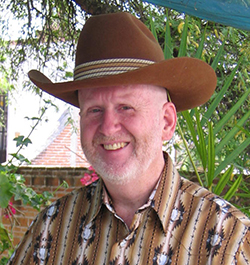 Español
Español
March 17, 2024
by Charles Miller
Someone wrote asking me to explain &"blockchain" and they made it clear that a non-technical oversimplification was what they wanted from me.
Oversimplification number one would be to say that a blockchain is a database containing information. That information could be property deeds, car titles, intellectual property, utility bills, patents, copyrights, financial transactions, or the ownership records for virtually anything of value. There are many such blockchains, and certainly there will be more.
A blockchain does not exist as a single copy only. Many duplicate copies of its data are stored on widely-distributed computers via the internet so that the loss or corruption on any one computer does not result in loss of data. This eliminates a single point of failure. All copies of the blockchain are constantly updated and validated against each other. The ubiquity of the internet has made this a practical reality.
A blockchain is decentralized, meaning there is no master list or a central computer as with traditional databases. Each computer involved in maintaining the blockchain is a peer. Each contributes to the consensus that approves entries that make it into the database.
Blockchain technology is designed to make it impossible to hack the system or forge the data stored on the blockchain. If someone were to do so much as change a period to a comma in a record from years ago, that would break the chain. Immediately all the other computers maintaining the blockchain would see the change and vote on whether or not the change was valid. The only way an invalid change could ever find its way into a blockchain is if more than 50% of the computers maintaining the chain were to agree to the change. In the case of the most popular blockchain there are believed to be as many as 100,000 computers maintaining the chain. While it might be theoretically possible to corrupt the blockchain by taking over half of those computers, doing so is forbiddingly impractical.
At this point it is relevant to point out that blockchain technology is not new. Computer scientist David Chaum first proposed a blockchain protocol in 1982 with a paper titled &"Computer Systems Established, Maintained, and Trusted by Mutually Suspicious Groups." In it he described how a network of computers could maintain the integrity of a database by distributing copies of the data among many computers that would constantly audit each other to make sure all the copies of the database were in agreement.
Over recent decades there have been several attempts to use blockchain technology to track financial transactions, but all suffered from imperfect control of ownership, the double-spend problem that could allow money to be spent twice before the fraud could be discovered. What is relatively new is what was done in 2009 by an anonymous programmer who went by the name of Satoshi Nakamoto who solved the double-spend problem in the paper proposing Bitcoin. Since then many people have realized how blockchain technology can revolutionize how all records of all kinds are kept.
It is possible to store all kinds of records on a blockchain with absolutely certainty of accuracy, and no double-spending or double entries. If the record was something like the deed to a house, then the buyer could be certain nobody else had bought the same house. The same thing goes for vehicle titles, copyrights, concert tickets, stocks, bonds, cash, votes in elections, and much more.
So what is blockchain? It is a database, a copy of which is shared among many computers that all follow strict rules to constantly audit each other so as to make adding any incorrect data entries almost impossible.
**************

Charles Miller is a freelance computer consultant with decades of IT experience and a Texan with a lifetime love for Mexico. The opinions expressed are his own. He may be contacted at 415-101-8528 or email FAQ8 (at) SMAguru.com.
**************
*****
Please contribute to Lokkal,
SMA's online collective:
 ***
***
Discover Lokkal:
Watch the two-minute video below.
Then, just below that, scroll down SMA's Community Wall.
Mission

Visit SMA's Social Network
Contact / Contactar

